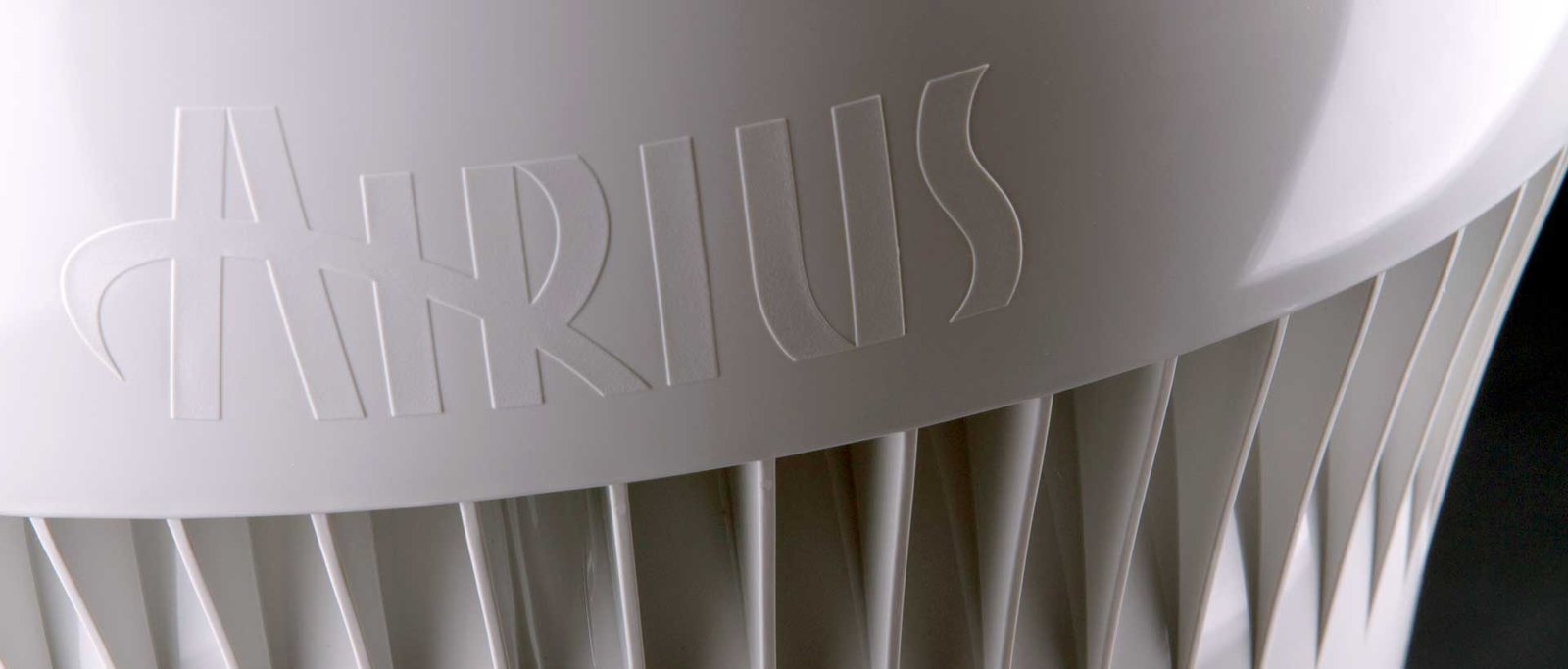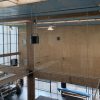
I was speaking to an engineer the other day and he asked me...
"What is the engineering behind an Airius Air Pear that makes them so effective?"
I thought that was a great question!
As mechanical engineers, you will no doubt understand all about fans and pressures and air movement off fan blades, turbulence etc.
In a typical fan, the air is moved off the blades laterally, meaning that as the fan gets higher off the ground its ability to move air at floor level, which is usually why you buy a room/zone fan, lessens because the air is going sideways, not vertically.
The Behaviour of Fans & Airflow
This is because of a couple of reasons: –
- The air moves laterally off the blade not vertically.
- The shape of the air flow from a typical blade fan is flat and wide with minimal impetus to move at 90 degrees to the blade rotation.
In the case of a ceiling fan of any size, once you combine the concept of stratification (found in every building to some or a greater extent), with the air flow from the fan wanting to go sideways, not downwards, the ability to push lighter, warmer air downwards diminishes. It’s like attempting to push an inflated beach ball to the bottom of a swimming pool. Very difficult. Airius has a great smoke test on our web site to highlight that difference in effectiveness. Click here to see it. www.airius.com.au
In the market place, there are lots of companies making fans that sort of work or half work in getting either warm or cooler air to the floor. And there is usually a range of product constraints that go with that such as strobing from the blades, maintenance contracts, high noise, poor construction, insufficient air flow, no thrust etc.
But nobody really came up with a solution to this issue until Airius spent US $2 million and thousands of hours researching and developing the unique patented air delivery system which is at the heart of all Airius Air Pears.
Development of the Air Pear
What Airius initially decided was in order to push the hot, lighter air to the floor continually, using very low amounts of electrical energy and low noise, they needed the optimum air flow pattern. Research was undertaken in-house to find that air flow pattern. A combination of logic, trial and error experiments in the Airius factory and air flow research from around the world, indicated it was the ‘Torus’ shape Airius are now famous for.
Once that was identified as the best, most efficient air flow shape, the challenge then was to design a system in a fan that could create that air flow shape.
After playing around with designs such as tubes with motors, unusual fan blade design for ceiling fans, strange looking discharge registers, it was obvious something more suitable and bespoke was needed. The air turbine concept became the obvious solution. How else could you get air to move to the floor at 90 degrees to the direction of the spinning fan blades, in a configuration that would force lighter air to the floor?
Importance of the Stator
Any turbine consists of a rotor and stator. Thousands of man hours were spent in developing a specific stator that would grab the lateral air flow off the rotor (the blades), and straighten it. This straightened air flow was then accepted by the venturi throat that was engineered into the discharge nozzle of the unit. The venturi throat then ‘grabs” and flicks the air which improves efficacy and further reduces energy use and noise.
One of the significant attributes of utilising a stator is that there is very low loss of air flow energy coming off the blades. If you don’t use a stator in your design and you are planning to use a fan in a case rather than open exposed blades, then you are relying on the sides of the unit (in the case of the inferior copy products available) to redirect the lateral airflow off the blades, to the floor. This is very inefficient and results in up to twice the amount of electrical energy (than an Air Pear uses) to move air and also results in air movement without any thrust.
In essence, with an Airius Air Pear® you are using the shape and engineering of the fan case to move the air, not the fan blade design so much. Fancy blade designs in this type of product offer very little as far as performance if they don’t have the ‘smart’ case internals to go with it.
That lack of an intrinsic, fundamental component of air movement and control found in air turbines (such as the Airius Air Pear) results in poorer performance, higher energy use and higher noise for competing products.
Stator design is not simple either. Smoke testing and CFD analysis was continually undertaken to ensure the stator was developed correctly to optimise its role in the collection and dispersion of the air flow off the rotor.
Challenges In Stator Design

Discrete compound curves and optimised spacing of the stator’s fins had to be determined. Once the design of the stator was finalised, the manufacturing component of the stator was commenced.
This in itself created problems in designing then making the specific moulds and their relevant components, testing for strength of the unit, coordination with other parts of the Air Pear design, ensuring assembly process would be not be retarded by the mould design, optimised plastics formula to ensure the moulds would produce the required outcome and the robustness of the product would be maintained, maximising strength of the stator blades and scores of usual prototypes, testing and redesigning to arrive at the final outcome.
In the end, though, this design was so successful and so effective, that Airius patented it. That is also why cheap, inferior copy fans without the engineering that is behind an Airius unit, cannot perform even closely to an Air Pear. And it is also why others try to copy the Airius Air Pear, as it is such a successful design.
The key issue here is not only the effective air flow shape created by the Airius design, but the adjustable force behind the air flow. Even at low speed the ‘Torus’ air flow shape still has the force (thrust) to punch through those thermal layers.
This turns the ‘beachball’ air flow type we discussed earlier in this article into a ‘Medicine ball’ version of air flow. Straight down through the thermal layers.
Other fan types end up providing less effective destratification and wasting all your heating/cooling/electrical energy because of those two key engineering initiatives.
Airius Engineering
When you understand all the research, development, moulding and plastics manufacturing and testing is undertaken in-house, with numerous moulds to be made and tooled for each Air Pear, it’s not hard to understand why the Airius Air Pear is the market leader with its:
- Proven effective performance.
- Robust resilient product – won’t fall apart if you hit it or drop it like other cheaper fans on the market.
- Ability to move cool or warm air all around a space without turbulence.
- Very low energy motors – from 6 watts and up.
- Low noise, independently acoustically tested product.
- Market leading rock solid full manufacturer’s replacement warranty – 5 years + 5 years refurbishment programme.
- Non-maintenance, no service agreement and no three phase power requirements.
- Non-structural and simple install process.
- Over 120,000 units sold in 14 years.
The Airius Air Pears are engineered, designed and manufactured from beginning to end by engineers, for engineers.
Why not find out how Airius can help you out in your next project. For any type of space from 2.5 – 39 metres high, there is an Airius Air Pear for every application. Cooling or heating – summer or winter – our units are proven in all climates to be very effective with thousands of satisfied customers.
Click this link to discover the world of Airius and to find out more about our unique market leading products – www.airius.com.au





